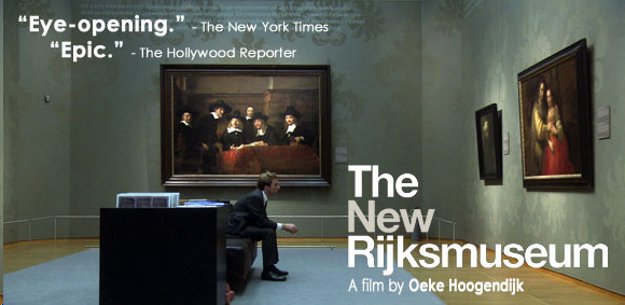‘The New Rijksmusuem’ Sheds Light on the Renovation of the Netherlands’ Most Famous Museum

How long does it take to renovate a museum?
The New Rijksmuseum is a documentary by Oeke Hoogendijk that follows the renovation journey of the Rijksmuseum, one of the Netherlands’ most popular art museums. The film follows the ups and mostly-downs of the museum and staff as they face multiple obstacles in re-opening on time.
The film starts in December 2003, focusing on the entrance of the museum; Spanish architects Antonio Cruz and Antonio Ortiz are talking about their contest-winning design that depresses the main pathway into an entrance, yet still maintains the pathway, structure and integrity of the building.
Yet Ortiz and Cruz’s designs face opposition in the form of the Dutch Cyclists Union, who argue that the design ruins the bike path that cuts through the tunnel of the museum. In a surprising move, the District Council opposes the entrance, which in turn sets off a series of delays. The repercussions of this decision are seen throughout the film as the architects and museum team pitch proposal after proposal for an entrance that is both useful and pleasing to the cyclists.
While the designs and construction of the museum are being worked on, restoration and organization for the museum’s art collection—1 million objects ranging from sculptures to paintings to furniture—is also underway. The documentary sheds a light into some of the processes and behind-the-scenes of the work it takes to maintain art, as well as acquire pieces. For example, the film follows Curator of Asian Art Menno Fitski as he procures two Japanese temple guards for an exhibit, and it follows Curator of Furniture Reinier Baarsen as he oversees the reproduction of a 17th century room.

While the documentary is mostly unbiased in its storytelling, one can’t help but feel negatively towards the Dutch Cyclists Union. The goal of the renovation was to re-establish the Rijksmuseum as an “international art center,” said then-Director Ronald de Leeuw, voicing his frustration with the cyclists. Yet multiple protests ranging from complaints about lane size to an attack on “Dutch cycle culture,” have caused setbacks for the Rijksmuseum in the form of both time and money—it’s hard to sympathize with activists who believe that biking is more culturally important than art. In that sense, the film makes a small commentary on the intersections between activism and culture.
The documentary, of course, ends on a high note. After a budget of 366-plus million Euros and 10 years in delays, the Rijksmuseum finally opened in April 2013, and became one of the most visited museums in the Netherlands for 2013 and 2014. The New Rijksmuseum documentary does a great job of highlighting the museum’s cultural importance in the realm of the art world.
Author Bio:
Gabriella Tutino is a contributing writer at Highbrow Magazine.




























































































































































































































































































































